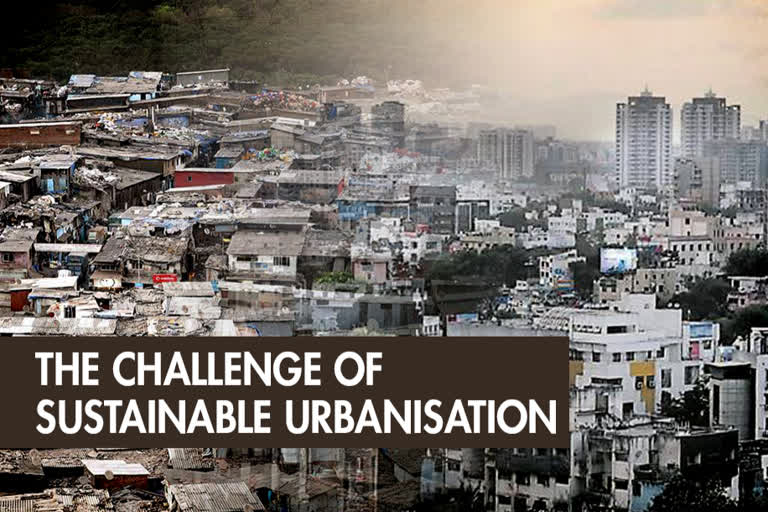Hyderabad:In the wake of population explosion and migration to urban areas, major cities worldwide are facing the challenge of sustainable urbanisation.
Hardeep Singh Puri, Minister of Housing and Urban Affairs in India revealed that 40 per cent of the nation’s population will live in cities by 2030 and by 2050, 50 per cent population will be concentrated in urban areas.
The Modi government initiated 3 projects with farsightedness about the urban populace. Out of these 3, the last phase of Smart Cities Mission and Atal Mission for Rejuvenation and Urban Transformation (AMRUT) will be on track by next year.
Smart Cities Mission was launched in January 2016 and several cities were selected as a part of this initiative. A time frame of 5 years was allocated to smarten up the select cities.
The ministers are optimistic that 50 percent of the “100 Smart Cities Mission” work will be completed by December 2020. The central government promised to allot Rs.50,000 crores towards AMRUT for the development of 500 cities.
Though the situation is better in states like West Bengal, Kerala, Gujarat and Andhra Pradesh, development works are lax in Bihar and Assam. Without reviewing the lacklustre enforcement of proposed schemes, it is doubtful how far the final phase of implementation will benefit the cities.
Urbanisation must provide citizens with better healthcare facilities and employment opportunities. The central government proudly proclaimed that its aim is to improve the lives of the urban population.
Under AMRUT, the selected cities must be equipped with basic amenities. World Bank refused to loan AMRUT after the recent government change in Andhra Pradesh. E-governance and sanitation projects are being neglected in many municipalities.
Promises of safe drinking water and uninterrupted power supply in 100 smart cities gave rise to many hopes. Prime Minister Modi hoped to change the face of urban India with schemes like Swachh Bharat and Digital India.
Read: Smog of 'death' prevails in Delhi
The Parliamentary Committee revealed that fund allocations to such proposed schemes were less than 2 per cent of the overall budget. 50 smart cities which were selected during the first phase got only 50 per cent of promised funds.
Developing only parts of a city and mismatch between funds and results are drawing criticism. It is high time the central government analyze urban planning in foreign countries and take a page out of their book.
Basic amenities, housing facilities, public transportation, healthcare, education and technology are the parameters for good quality of life. Cities like Zurich, Auckland, Munich and Copenhagen are competing for the best city title for years now.
Singapore illustrates how public transportation is crucial for the development of an economy. Iceland and Finland are synonymous with clean environment. On the contrary, three-fourths of Indian cities are heavily polluted cutting citizens’ lives short by 3 years.
Air pollution by Diwali crackers, flooding due to rains and potholes on roads are all examples of the miserable state of Indian cities. Temporary makeup and incomplete treatment will not improve the condition of urban India.
India stands last in The Environmental Performance Index (EPI) among 180 surveyed countries. Governments must work towards achieving clean air and water.
Villages must be made self-sufficient with small scale industries while simultaneously ameliorating the transportation system in urban areas. Only when urbanisation scales new heights, India will move ahead.
Also, read: Six-day Renukaji fair starts Thursday



